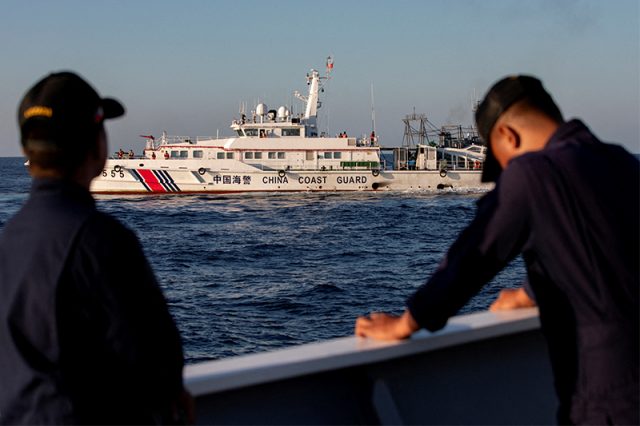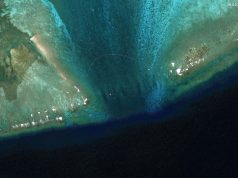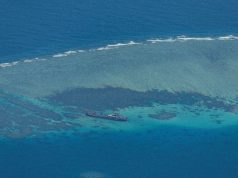
- China-Philippines relations tested by intractable row
- Channels for diplomats, coast guards, leaders’ delegates
- Philippines missions, patrols testing China, emboldened by U.S. support
MANILA — The Philippines and China have agreed to set up new lines of communication to improve their handling of maritime disputes, according to a document and a Philippine diplomatic source, as ties sour over clashes about territory in the South China Sea.
The two countries have traded barbs repeatedly over jurisdiction in the contested South China Sea as the Philippines, emboldened by support of defense ally the United States, challenges China’s permanent presence around strategic features inside Manila’s exclusive economic zone.
Three communication channels would be established specifically for maritime issues, according to the source, who provided a document with highlights of an “Arrangement on Improving Philippines-China Maritime Communication Mechanisms”, which was signed on July 2.
“China has always been committed to working with the Philippines to properly address maritime issues through dialogue and consultation,” Foreign ministry spokesperson Lin Jian told a briefing when asked about the agreement.
“The two countries have agreed to further strengthen the dialogue on sea-related communication between diplomacy and the maritime police, so as to jointly safeguard the stability of the maritime situation and the overall situation of China-Philippines relations,” Lin added.
The foreign ministries of China and the Philippines and the Chinese embassy in Manila did not immediately respond on Wednesday to separate requests for comment on the matter.
The first channel would be used by “representatives to be designated by their leaders,” with the other for respective foreign ministries at ministerial or vice-ministerial level, or their designated representatives, according to the document.
The third would involve their respective coast guards “which will be set up once the corresponding MOU (Memorandum of Understanding) between the coast guards is concluded,” the document said.
The source, who declined to be identified because they were not authorized to speak on the issue, said the Philippine foreign ministry was discussing with its Chinese counterpart guidelines to govern the implementation of the arrangement, which follows a June 17 clash between rival vessels near the Second Thomas Shoal, the site of frequent standoffs.
Challenge to China
The Philippines last month accused China’s coast guard of intentionally ramming and deliberately puncturing navy boats and seizing weapons to disrupt a resupply mission to troops stationed on the vessel grounded at the shoal, seriously injuring a Filipino sailor who lost a finger.
China said the Philippine vessel had illegally intruded on its territory and had “deliberately and dangerously” approached a Chinese ship resulting in a slight collision.
The agreement on communications channels is not the first, with the two sides establishing a line between respective maritime offices.
Antonio Carpio, a former Philippine Supreme Court justice, and a prominent advocate of Manila’s maritime claims, expressed skepticism over the communication lines “because that will not resolve the dispute.”
“We don’t know if they will answer when we call, so we will have to wait,” Carpio said. “It is good to have that but we should not expect miracles out of that.”
The Philippines and China agreed during the recent meeting on the need to “restore trust” and “rebuild confidence” to better manage disputes.
The Philippine resupply missions, often accompanied by media, have riled China, which sees the Second Thomas Shoal as part of its territory, despite being 1,300 km (808 miles) off its mainland and within Manila’s EEZ.
Beijing maintains it has sovereignty over most of the South China Sea based on its old maps and has deployed hundreds of coast guard vessels deep into Southeast Asia to assert its claims, disrupting offshore energy and fisheries activities of other neighbors, including Malaysia and Vietnam.
China has refused to recognize a 2016 international ruling that concluded Beijing’s claims have no basis under international law.
The United States has backed the Philippines over the clashes, condemning what it calls Chinese aggression, while underlining its “ironclad” commitment to a 1951 Mutual Defense Treaty under which it must defend its former colony if attacked. China has accused the United States of interference.
While China claims almost all of the vital waterway, where $3 trillion worth of trade passes annually, the Philippines, Brunei, Malaysia, Taiwan and Vietnam lay claims to parts.
—Reporting by Karen Lema and Mikhail Flores; Additional reporting by Joe Cash in Beijing; Editing by Martin Petty, Michael Perry and Kim Coghill








